Finally, the smock is beginning to gain some traction here in the US. We’ve written about them in the past, mentioning smocks from Drop Zone, the now defunct EOTAC, SOD Gear, Level Peaks, SORD as well as the upcoming Vertx smock. But, we’ve never really talked about them and explained what they are all about.
They are literally a concept unlike anything we have in the US. I’ve heard them compared to the M65 field jacket but that idea is simply uniformed. A smock isn’t just a coat.
Rather, the smock is much more than a simple jacket. In addition to use as clothing, the smock is also intended to carry much, if not all of the wearer’s fighting load. They were originally envisioned to carry several days of combat equipment including rations, ammunition, and radios.
Primarily, the smock is a European concept and in particular, used by Commonwealth nations. I got my first SAS smock in 1989 in a trade for a poncho liner during an exercise in Belgium. Its use as an issue garment has traditionally been restricted to Special Forces yet several nations have adopted it for general issue in one form or another. One example of a much watered down smock on general issue is the Canadian Army’s combat jacket. When this design was initially adopted in the 1960s it was envisioned that the Soldier would carry his ammunition and other fighting load components in the jackets pockets. What’s more, the British military now issues a Smock as a general purpose item.
There is very limited use of Smocks by US forces. During the early 1990s, an experimental clothing system called Battle Dress System (BDS) was developed by the US Army Special Operations Command. It was a layered clothing system that eventually became the Lightweight Environmental Protection sub-system of SPEAR. The outermost layer called the SOF BDU, was a solid grey combat jacket and over trouser. With its solid great color the item was rejected due to institutional prejudice. When LEP was adopted, it was without the SOF BDU.
Issue items like the SAS Smock are pretty good, but commercial interests have taken them to a whole new level. Britain’s Special Air Sea Services has been manufacturing specialized variants of the smock since the 1980s. Other companies like Canada’s Drop Zone picked up the torch in the 90s and now, commercial items are more prevalent than the issue garment.
Smocks have made a lot of sense in Northern Europe where the cold wet climate requires layering. You see, as smocks are coat-like garments they are generally worn layered over shirts. In many climates the US military finds itself in, this would be too warm as a daily wear item. What’s more, the Extreme Cold Weather Clothing System in all three of its incarnations has offered various technical shells. It seems as if the US skipped the smock altogether for a time. But, with the advent of the most modern smocks, new fabrics have been introduced into the design essentially making them softshells. Conversely, Australian Mission Pac has developed a MultiCam ripstop 100% Cotton Smock for use in warm climates.
Other interesting concepts have been developed such as the Arktis SF Sleeveless Smock which looks like a hybrid between a smock and a 5.11 shooting vest.
Oftentimes, those with no experience with smocks will criticize the design. They don’t understand that use of a fully featured smock allows the reconfiguration of the load. For example, armor can be worn under the smock. Perhaps a chest rig may be required and perhaps not, but much of the items carried on the armor or in a pack can be carried in pockets, readily available.
With even more products hitting the market soon, smocks look to be making an indelible mark on the US market and as they become more and more prevalent, we will begin to see more widespread use, including on the battlefield. Think of the smock as yet another tool in the toolbox and use accordingly. Remember, it’s a tool, not the tool, and you’ll be ok.
-Eric Graves
The Editor
SSD
Tags: Battle Dress System, Drop Zone, EOTAC, Level Peaks, SOD Gear, SORD, Special Air Sea Services, VertX


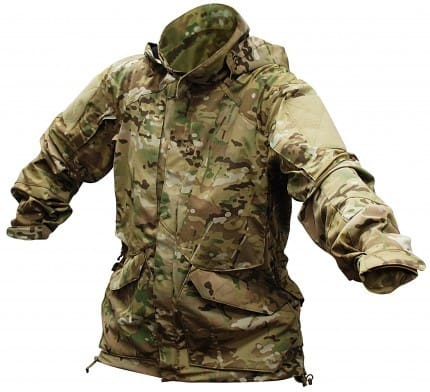
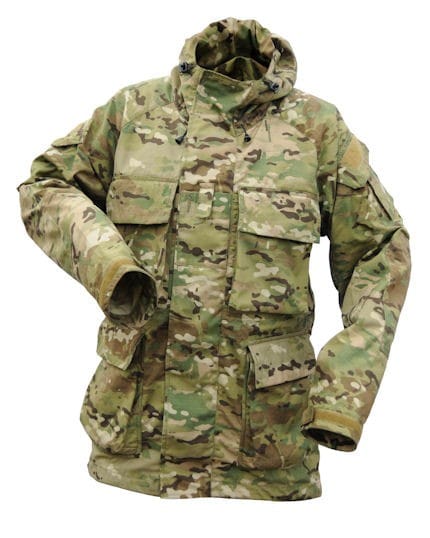
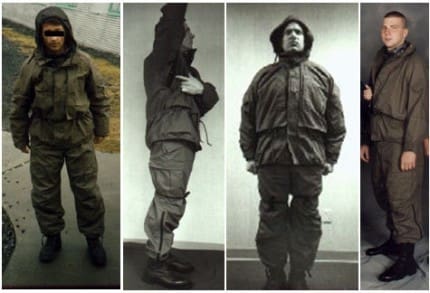
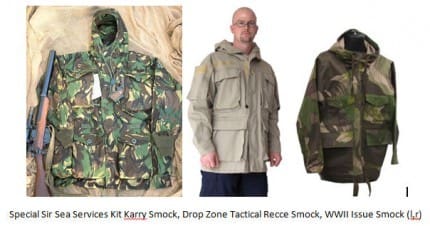
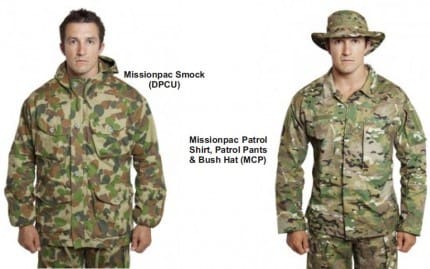
Whats the brand of the smock at the top of this article… looks neat! Its worth running an article on the UK PCS smock, which has just delivered a host of new features to the Uk Windproof smock!
Vertx is the brand.
Get me some info man and we’ll get it posted.
I believe its the vert’x smock. I like itaswell. I’ve got an old fashion UK DPM para smock, when will the finally bring them out in woodland marpat and desert marpat?! Those colours i really miss 🙁
I just can’t see this being comfortable when carrying a “full combat load” as intended. Great jacket idea with pockets for small items (survival items, maps, bars, etc) but not what I’d want for 6-8 magazines etc.
I’ve had a Drop Zone Recee Smock for a few years now and can recommend both the product and the company. I also have one of their polartec jackets and it has seen me through 3 tours in Afghanistan with no problem.
My smock is in CADPAT. Though now they only offer the smock in tan, olive green, multicam and ACU.
I have no connection with this company other than being a satisfied customer.
Cool, I’l look into it!
Loving the Vertx gear! I have to say the UK Levelpeaks smock is a real winner super durable, great features great team there too! i also love my TAD Battle hoodie light in MC… smocks are the future!!!!
The PCS smock is out on issue now and for the first time guys have arm pockets with velcro… nothing big but a win for UK troops! It has a mesh drop liner ( cheap mesh though!) pit vent and fleece line handwarmer pockets + all the classic SAS/windproof smock ideas… Of course the green army got these ideas from a UKSF clothing project called tantalus which also features heavily in the level peaks design… no surprise, when you think about their customer base.
Not great links but heres something,
Tantalus Smock (in DPM) pictures: http://www.survivalaids.com/order1.php?pg=1126
LPA tech smock (in multicam) pictures: http://www.levelpeaks.com/level-peaks-technical-windproof-combat-smock-html
PCS smock (in MTP) pictures: http://iacmc.forumotion.com/t5408-smock-combat-windproof-mtp-pcs-cu
SORD also make an excellent smock in Multicam and SORD base colour, which is just Coyote really. However, I’ve used smocks as an outer layer for years in the Australian Army and have always found them to be a great bit of kit. I got a DPM smock from a trip to the UK in 1984 and was able to source a commercial variant in DPCU in the late ’90’s which I flogged to death!
US First Spear is also offering their own smock and you should mention the Norwegian NFM with their BAJA smock and new GARM smock.
I have a Level Peaks smock.
Brilliant bit of kit.
Great round up. I’d like to see more about that SOF BDU prototype – apart from the color choice, it seemed to have some pretty cool features. And it would be interesting to see an American take on a European uniform design.
By the way, I’d always thought that smocks were intended more for the soldiers second line and basic sustainment items more than for his full combat load of mags, frags, etc. ?
Excellent writeup!! I’ve always been a big smock fan and personally have an SASS Kit Carry Smock in DPM and a Drop Zone Recee Smock in Multicam. I always joke with people that an SAS dude without his smock would be like a turtle without his shell 🙂
I wore my smock to death when I was in. It lasted me all around Germany, a couple of tours of Northern Ireland and a trip to Macedonia. Worn right, it is a versatile garment capable of carrying more than enough kit and equipment.
Some people just see it as a cumbersome jacket, but other who wear it right see it as a gucci piece of kit well worth the space in your pack.
When I went to Panama in the early 90s, we sewed our own smocks out of BDU blouses that were a size too large, patterning them on the Brit smocks one of our guys brought home with him when he left a GLCM security unit. Loved it. Never get away with wearing it now though, sadly.
I agree with Strike-Hold, a smock isn’t meant to replace your webbing/chest rig. It’s just meant to carry some basic admin items/some extra rats etc.
Its interesting that the US has never had/developed issued a smock in there military history.
It could compared to maybe PCU level5? (Sort of)
The “key outer garment” of issued the kit, not totally waterproof and a fairly windproof garment.
Arktis should be able to make smocks in desired colours I believe. Their smocks have been the standard for years, as far as I’m concerned
The reason the US never developed the smock is exactly the same bias that insists on an 85 pound plus combat loadout. With the pistol belt and suspenders, we got away wearing it over the Goretex jacket. A full plate carrier, with chest mags, and hydration pack carrying more gear, no. Our Northern Allies who deal with ops in cold/wet environments already know it, and that’s why they kept up with the development.
We’ve been uparmoring for 20 years, conveniently supported by the desert and it’s lack of snow, cold, and temps never getting over 40. Put 5-8 pounds of insulated clothing on the soldier, something has to give. As pointed out, the experts in that scenario wear smocks, use the pockets, and get the job done.
Of course, NIH will prevent our use and acceptance until the end of the next conflict, odds are looking at the 50 year cycle, it’s arboreal cold wet. We’ll be dragging woodland out of the warehouses as a get by.
Anyone got any leads on more info on that SOF BDU-where to look?
I saw those SOF BDU pics somewhere on the web years back and can’t figure out where.
As mentioned, a smock makes most sense for snipers, LRRP and related missions in which you need a more comprehensive 1st line. In addition, if weather and situation allows, it may be neat for infantrymen to have more room e.g. for ammo than your webbing provides. In cold weather conditions, these roomy pockets are pretty convenient, too. Also, smocks can temporarily substitute the webbing in situations in which the soldier needs to be very light and agile and only needs to carry two spare mags and a radio or so.
The current European trend of partly issuing overloaded smocks to every infantryman may be a bit exaggerated. However, the evolution of upper combat clothing very much depends on future body armour options and the advancement of softshell fabrics, and we will never find the all-in-one-solution suitable to desert, arctic and tropical environments for all kinds of missions.